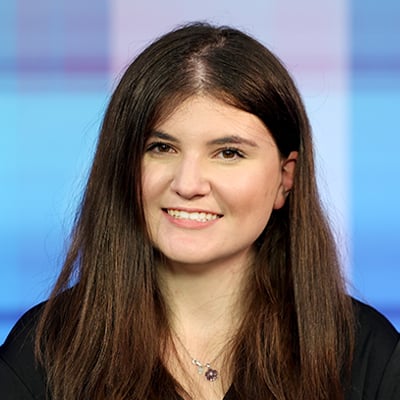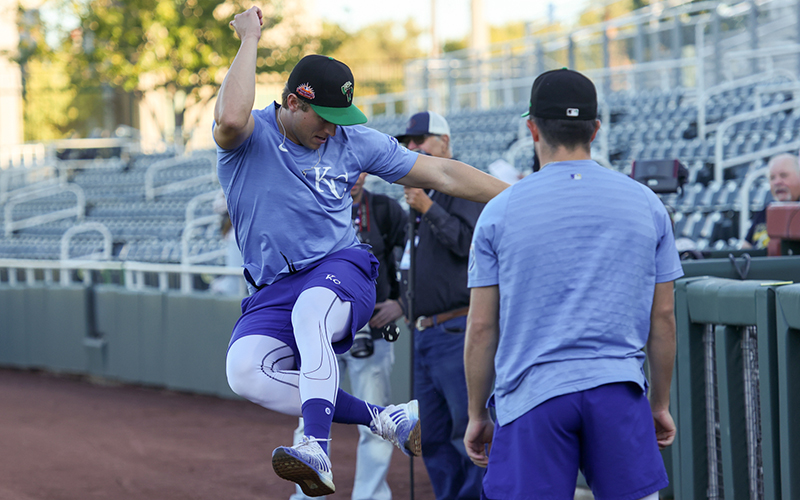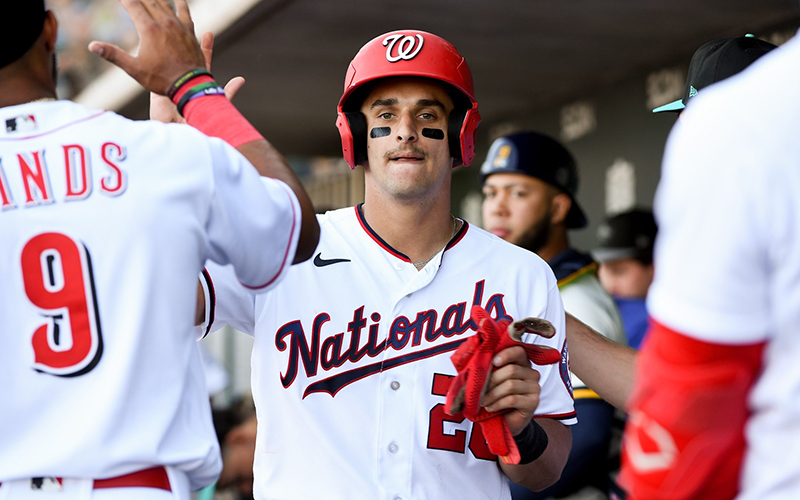MESA – Some coordinate interviews and some are the subject of them. Some wake up early and head to the ballpark to practice while others are there to conduct the workout. And some play in games that others are coaching or managing.
No day in the life of ballplayers, league employees or coaches and managers is ever the same in the Arizona Fall League. But everybody who participates in the 30-year-old league has the same objective – getting minor league prospects to the major leagues.
The Fall League was created in 1992 as a way for Major League Baseball to provide an easily accessible offseason developmental league in the U.S. for prospects who couldn’t play winter ball. Many players go out of the country during the winter to play in the Caribbean and there was no easy – or inexpensive – way for scouts or their parent organizations to monitor their progress.
Now, 180 prospects chosen by their big league affiliates make their way to Arizona each year to play in the Arizona Fall League. Most arrive at the end of the minor league regular season in late September and remain in the Valley through most of November. Sprinkled across six spring training complexes, the six teams play roughly 30 games.
Over the years, budding superstars such as Aaron Judge, Bryce Harper, Mike Trout and Mookie Betts have suited up in the AFL. The league also provides umpires, coaches and managers another place to develop and be evaluated.
While the league is meant to showcase minor league players for major league scouts, most players believe that the Fall League provides a more laid-back environment that gives them a break from the hustle and bustle of the minor leagues.
Players
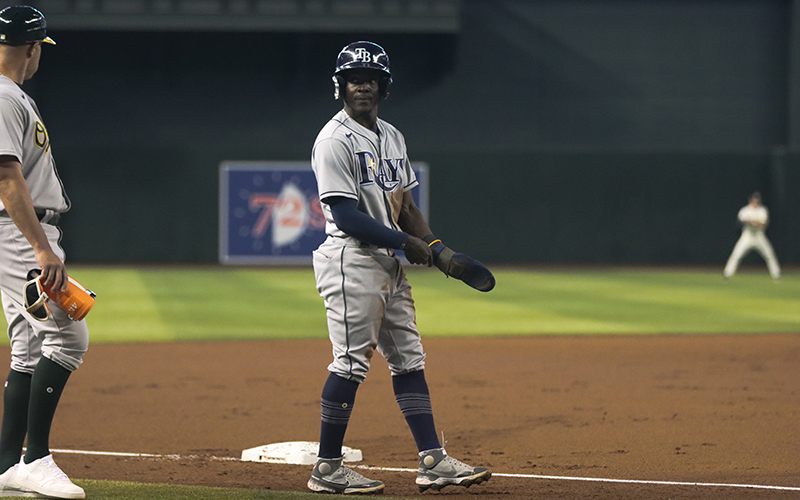
A day in the Arizona Fall League for Rays prospect Ronny Simon consisted of waking up early for practice or a game, where he applied new techniques learned from his fellow prospects and coaches in effort to improve his game. (Photo by Rudy Aguado/Cronkite News).
Phillies prospect Carlos De La Cruz said that a day of his life in the Fall League is much different than a day in the minor leagues.
While the minors have strict rules, the Fall League, according to De La Cruz, allows players to have fun and play the game in a more relaxed atmosphere than the high-pressure environment of spring training. And with all of the games played in Cactus League stadiums, travel is minimal.
“Just go out there and play ball and showcase their talent,” De La Cruz said during batting practice. “That’s the majority of the craft we’re doing here. And then the minors are more so kind of just like work. You go by your team rules and whatever the team does, that’s what goes.
“Everything comes with its own rules. Like always, we don’t have rules to follow, but for the most part it’s been a chill part here.”
The Fall League averages a few hundred fans per game, but that number doesn’t deter prospects from enjoying their experience.
For prospective Rays infielder Ronny Simon, a day in his life with the Fall League consists of taking in knowledge from other prospects or from his experiences in games and then trying to apply what he has learned the very next day.
If that means waking up early and going to the ballpark to repeat a play that he missed the night before, he’s willing to do whatever it takes to stand out.
“(I) get up early, start the day early, start with a workout, and then get some glove work in,” Simon, a Dominican Republic native said through an interpreter. “And then during the time when we run infield, outfield, I keep that, try to keep that same focus so that when it comes time for the game, I know what it is that we’ve run through, what we’ve gone through in practice.”
De La Cruz and Simon, both infielders, are required to travel with their teams to away games, but starting pitcher and Marlins prospect Justin Fall isn’t required to travel unless he is starting that day.
Depending on the day, each team will travel by bus to the ballpark they’ll be playing at. Players have their housing paid for by their organization and are placed in apartments or houses either with a roommate or alone. Just like the minor leagues, players are provided meals by their organization.
“If it’s a heavy workload day, I’m here pretty early and (batting practice) days obviously (I am) here later than normal, but it’s a really good setup,” said Fall, whose Fall League team is based at the Cubs’ spring training facilities at Sloan Park in Mesa.
“The Cubs definitely take care of us,” he said. “And as anybody can see when they look around this place (Sloan Park), it’s pretty beautiful. So it’s not a hard workplace to come to. So, definitely long days, but some are shorter than others. It’s always entertaining, always fun.”
Fall League employees

Every day is different for Fall League communication supervisor Joe Langan. This season, Langan was assigned to one of the league’s ballparks to coordinate interviews between team personnel and the media. (Photo by Austin Ford/Cronkite News)
The people behind the scenes have prime seats to view the sport’s future stars as they blossom in the desert.
Joe Langan, communications supervisor of the Fall League, said no day is the same for him, but every day is another opportunity for players, who have never been able to fully showcase their talent before, to demonstrate their ability against other top prospects.
Langan’s days differ depending on what’s needed.
He is assigned to one of the ballparks each day and is on hand there to coordinate interviews for players and media organizations that cover a player’s major league or minor league affiliate. He also is responsible for keeping communication lines open between the Fall League and Major League Baseball.
His responsibilities might change depending on which team he is assigned to that day. However, he said it’s rewarding not only because players garner more experience, but because he knows he played a small part in helping them advance in their careers.
“When I was working for the Fall league last year, we had probably closer to 30 guys make it to the major leagues and (I would) just shoot them a quick text message, ‘Hey, congrats,’” he said. “And they’re like, ‘Oh, thank you so much.’ Like, that’s a really cool part of my job just to interact with those guys and kind of see them through into the big leagues.”
Langan understands that the goal of the league isn’t necessarily to attract a lot of fans. Rather, it aims to give prospects a chance to develop and show scouts from around the minor and major leagues what they are capable of doing. It also can allow organizations to look at prospects at different positions, or for their pitchers to develop new pitches.
Annalee Ramirez, content director and translator at the Fall League, said that she extended her time with the league after building relationships with players and other officials.
While she works 12-hour days, depending on the logistics of the games and the type of content she needs to put out, Ramirez believes that her job has been extremely rewarding. Ramirez works closely with players to translate for them while filming content for Instagram and Twitter, taking photos and editing, although it’s a lot of juggling, Ramirez wishes the Fall League could be year-round.
“Getting to know different people, from the players to the groundskeepers, the people in the offices, the press boxes, the people that come to interview from different news outlets and things like that, I think that’s been the most fun,” Ramirez said. “And I think that that’s what I’m going to miss the most. On my way to work today. I was driving and I was like, ‘It’s the last week!’ We’re almost done and everybody’s just gonna go their separate ways and go back to where they came from, whether it was in town or out of state.”
Scouts
Scouts can be found at venues scattered throughout the Valley, casually catching up with old baseball friends while getting to know some of the players from other organizations and evaluating them as prospects should their name come up in a potential trade.
Tyler Tufts, a scout in the San Diego Padres organization and former minor league pitcher with the Texas Rangers was sent to cover the Mesa Solar Sox for five games. However, Tufts doesn’t look at Padres prospects. Instead, he focuses on free agents, potential trade candidates and eligible Rule 5 picks.
A day in the life for him consists of being at Sloan Park before batting practice and compiling information on players, and while he may have a certain target, most of the time he is getting a first look at a player. The goal of a scout is to spend as much time compiling information on a player as possible.
“I am building our database, and that requires getting up to speed on multiple prospects,” Tufts said. “I’ll put a note on everyone, build off someone you saw during the year. So you got them in spring training, you got them in season, you got a Fall League look to feel pretty comfortable about that one prospect.”
Although he’s in Arizona for a short period of time, he said that the most rewarding part of his job is when a lower-profile prospect he is high on pans out, and he gets to see that player succeed in the major leagues and contribute to a winning organization knowing that he had input.
He said there is satisfaction in “just sticking your neck on the line, maybe for a player, perhaps, (who) has some questions (about him),” he said, adding, “not top, top prospects – you know them.”
Coaches
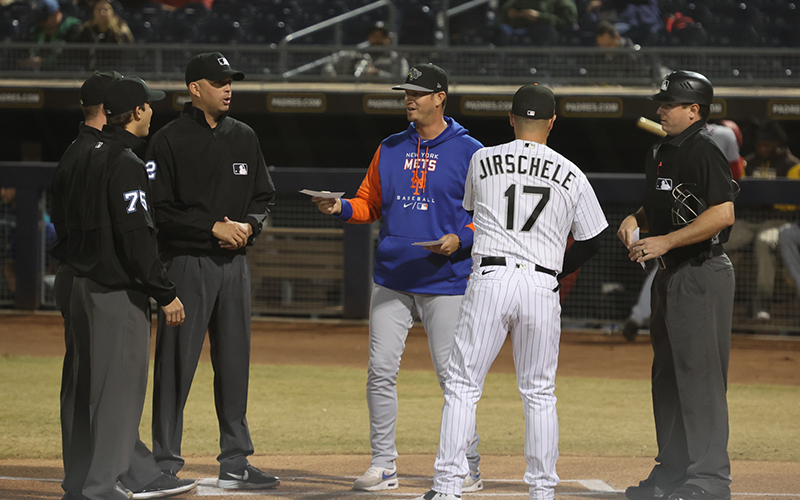
Managers are asked by their major league organizations to attend the Arizona Fall League to coach the younger generation in an experience unlike any other. (Photo by Austin Ford/Cronkite News)
Many coaches are asked by their major league organization if they would like to spend an extra month in the offseason coaching players in the Fall League.
Seattle Mariners Triple-A pitching coach Alon Leichman was asked by the Mariners farm system director if he had an interest in participating in the Fall League. He knew that it would not only be an opportunity to impart his wisdom on the younger generation but could help him improve his coaching skills before the start of next season.
While players are required to show up early on game day, coaches are required to do the same. Coaches will arrive at the field with their teams around 9:10 a.m. if they are the home team and 11:10 a.m. if they are the away team.
Coaches spend their pregame with players, throwing to them in batting practice, fielding grounders to the infield or talking about how to improve their game. When it comes time for the game, coaches can be found in the dugouts, while managers double as third-base coaches.
For everybody involved in the Arizona Fall League, the Valley isn’t a bad place to spend an offseason.
“Here is just more chill, to be honest,” De La Cruz said. “Everything is more on our time. We decide what we want for ourselves. It’s not bad that you get to play with all the best players in the league.
“So it’s pretty fun that we’re all together. We get to play and do our thing.”
